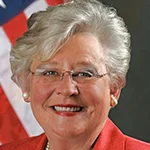 |
| Robert Dilenschneider |
This season is that wonderful time of the year when people across our nation and in many parts of the world join in celebrating Christmas, Hanukkah, Kwanzaa and, finally, the beginning of a New Year. There are many different ways of marking these special days. As one small contribution to the season, here are some little-known facts about the holidays that may interest you:
• Although we celebrate the birth of Jesus Christ during the winter (just when and for how long varies with different sects), there is no mention of any season in the Bible. Most historians actually believe Jesus was born in the spring.
• The reason for giving presents during Christmas is to symbolize the gifts given to Jesus by the Three Wise Men.
• “Jingle Bells” was composed for Thanksgiving, not Christmas. The song was written in 1857 by James Lord Pierpont and published under the title “One Horse Open Sleigh.” It was supposed to be played in the composer’s Sunday school class during Thanksgiving as a way to commemorate the famed Medford, Mass., sleigh races. In 1965, “Jingle Bells” became the first song to be broadcast from space.
• Christmas trees go all the way back to the ancient Egyptians and Romans, who marked the winter solstice with evergreens as a reminder that spring would one day return. It wasn't until Prince Albert of Germany introduced the tree to his new wife, Queen Victoria of England, that the tradition became widely popular.
• Harry Truman was the first president to celebrate Hanukkah at the White House.
• Hanukkah Gelt as we know it is a relatively new tradition — and no one knows who invented it.
• The books of Maccabees that tell the story of Hanukkah weren’t included in the Jewish Bible, but they are in the Catholic Bible.
• The game of dreidel was inspired by a German game played at Christmastime, which is itself an imitation of an English and Irish one.
• Kwanzaa was started in 1966 by Dr. Maulana Karenga to celebrate and honor African culture and inspire African Americans. People of all racial and ethnic backgrounds, however, are invited to join in the celebration.
• The colors of Kwanzaa are a reflection of the Pan-African movement representing unity for peoples of African descent worldwide: Black for the people, red for the noble blood that unites all people of African ancestry, and green for the rich land of Africa.
• The original St. Nick was more generous than jolly. According to legend, St. Nicholas was a 4th century Turkish bishop who gave away his inheritance to help the needy and rescue women from servitude. As his legend spread in Medieval Europe, the Dutch changed his name to Sinter Klaas. That later morphed into Santa Claus among English speakers, and the rest is history.
• In the Netherlands, Sinterklaas, as his name is rendered today, arrives from Spain, not the North Pole. He has little helpers, but they are not adorable hard-working elves.
• The first caroling had nothing to do with Christmas. What we now consider seasonal carols were liturgical songs in the 12th century, while the practice of singers traveling to different homes came from a tradition in England.
• The amount of wrapping paper used for Christmas each year could circle the equator dozens of times.
Best wishes for a joyous Holiday Season and a New Year that is all you want it to be.


 Southern governors claim they know what's best for their working class, and it's not pay raises... A Ukrainian human rights group played a key role in convincing House Speaker Mike Johnson to hold a vote to send arms to Ukraine, Israel and Taiwan... Trump Media & Technology Group blames short-selling and not lousy outlook for its stock slump.
Southern governors claim they know what's best for their working class, and it's not pay raises... A Ukrainian human rights group played a key role in convincing House Speaker Mike Johnson to hold a vote to send arms to Ukraine, Israel and Taiwan... Trump Media & Technology Group blames short-selling and not lousy outlook for its stock slump. The techniques deployed by OJ Simpson's defense team in the 'trial of the century' served as a harbinger for those used by Donald Trump... People worry about the politicization of medical science just as much as they fret about another pandemic, according to Edelman Trust Barometer... Book bans aren't restricted to red states as deep blue Illinois, Connecticut and Maryland challenged at least 100 titles in 2023.
The techniques deployed by OJ Simpson's defense team in the 'trial of the century' served as a harbinger for those used by Donald Trump... People worry about the politicization of medical science just as much as they fret about another pandemic, according to Edelman Trust Barometer... Book bans aren't restricted to red states as deep blue Illinois, Connecticut and Maryland challenged at least 100 titles in 2023. The NBA, which promotes legalized gambling 24/7, seems more than hypocritical for banning player for placing bets... Diocese of Brooklyn promises to issue press release the next time one of its priests is charged with sexual abuse... Truth Social aspires to be one of Donald Trump's iconic American brands, just like Trump University or Trump Steaks or Trump Ice Cubes.
The NBA, which promotes legalized gambling 24/7, seems more than hypocritical for banning player for placing bets... Diocese of Brooklyn promises to issue press release the next time one of its priests is charged with sexual abuse... Truth Social aspires to be one of Donald Trump's iconic American brands, just like Trump University or Trump Steaks or Trump Ice Cubes. Publicis Groupe CEO Arthur Sadoun puts competition on notice... Macy's throws in the towel as it appoints two directors nominated by its unwanted suitor... The Profile in Wimpery Award goes to the Ford Presidential Foundation for stiffing American hero and former Wyoming Congresswoman Liz Cheney.
Publicis Groupe CEO Arthur Sadoun puts competition on notice... Macy's throws in the towel as it appoints two directors nominated by its unwanted suitor... The Profile in Wimpery Award goes to the Ford Presidential Foundation for stiffing American hero and former Wyoming Congresswoman Liz Cheney. JPMorgan Chase chief Jamie Dimon's "letter to shareholders" is a must-read for PR people and others interested in fixing America and living up to its potential... Get ready for the PPE shortage when the next pandemic hits... Nixing Netanyahu. Gaza carnage turns US opinion against Israel's prime minister.
JPMorgan Chase chief Jamie Dimon's "letter to shareholders" is a must-read for PR people and others interested in fixing America and living up to its potential... Get ready for the PPE shortage when the next pandemic hits... Nixing Netanyahu. Gaza carnage turns US opinion against Israel's prime minister.


 Have a comment? Send it to
Have a comment? Send it to 
No comments have been submitted for this story yet.